ZTE ZXR10 8902E
ZTE ZXR10 8902E switch consists of a chassis, power subracks, cards, a fan subrack, and a back panel. It uses a standard 19″ chassis that can be installed independently or in a standard 19″ cabinet and supports 4 slots, 2 for MCS modules and 2 for line interface cards.
ZTE
- Description
- DATASHEET
- Comparison
- Reviews (0)
Description
ZTE ZXR10 8902E overview
The ZXR10 8900E series switches of ZTE Corporation are applicable to the backbone layer or convergence layer of Metropolitan Area Network (MAN). They can serve as backbone/convergence layer switches for corporation and campus networks.
The ZXR10 8900E series switches can provide gigabit, 10-gigabit, 40-gigabit Ethernet interfaces, and support Synchronous Ethernet, the IEEE 1588v2 precision time protocol, and GPS time synchronization. All the ports support full wire-speed forwarding of Layer 2 and Layer 3, which means that they satisfy the increasing requirements for bandwidth. The ZXR10 8900E series switches support multiple unicast and multicast protocols.
Services carried by data network increase rapidly with the network development. It requires higher Quality of Service (QoS) and better security for network equipment. The ZXR10 8900E series switches provide policies and resources of QoS and Access Control List (ACL), which assures the system security.
The ZXR10 8900E series switches provide the hot-swapping function for power supply modules and Main Control and Switching (MCS) modules, which means that they are applicable to large-capacity networks with high reliability.
ZTE ZXR10 8902E features
• Large system capacity
• Carrier-class reliability
• Capability to bearing all services
• Full wire-speed forwarding and filtering capability
• Support of multiple network protocols
• Open architecture that supports high upgrade performance
• Energy saving and environment friendly
• Intelligent unified operation and maintenance system
ZTE ZXR10 8902E abstract
• GE service cards
• 10-GE service cards
• 40-GE service cards
| Attribute | Feature | |
|---|---|---|
| L2 features | VLAN | Access, trunk, and Hybrid link modes |
| VLANs divided based on ports, MACs, subnets, and protocols | ||
| Default VLAN | ||
| VLAN translation | ||
| PVLAN | ||
| Super VLAN | ||
| QinQ | QinQ-based forwarding | |
| Normal QinQ and port-based outer tags | ||
| Selective QinQ and stream-based outer tags | ||
| Selective QinQ inner priority mapping | ||
| TPID modification | ||
| MAC | MAC address learning, aging, and fixing | |
| Static and dynamic MAC address settings | ||
| Source MAC address filtering | ||
| Interface MAC address learning restriction | ||
| MAC address attack prevention | ||
| MAC address binding | ||
| MAC Move based on the port priority | ||
| Port features | Full duplex, half duplex, and automatic negotiation work modes | |
| Ethernet interfaces of 10M, 100M, 1000M, 10G, 40G, 100G, and self-negotiated rates | ||
| Jumbo frame suppression or forwarding | ||
| Layer-2 protocol transmission | ||
| Loopback detection | ||
| Port traffic control | ||
| Shutdown port by default | ||
| 1-minute peak statistics | ||
| Flapping suppression on ports | ||
| Restoration of the default port configurations | ||
| Communication implementation through a single fiber cable | ||
| Separated ports | ||
| Link aggregation | Static link aggregation | |
| Dynamic LACP | ||
| Stream-based load balancing | ||
| Link aggregation crossing line cards | ||
| Inter-rack link aggregation | ||
| ARP | Static ARP configuration | |
| Dynamic ARP learning and aging | ||
| ARP proxy | ||
| ARP attack prevention | ||
| Restricted number of ARPs to be learned | ||
| Forwarded and controlled ARP messages based on VLAN | ||
| LLDP | LLDP | |
| LLDP-MED | ||
| UDLD | UDLD | |
| GVRP | GVRP | |
| STP | STP | |
| RSTP | ||
| MSTP | ||
| STP transmission | ||
| BPDU protection | ||
| Edge port protection | ||
| Port loopback protection | ||
| Root protection | ||
| ZESR | ZESR loop network protection and switchover | |
| Single-ring ZESR | ||
| Multiple-ring ZESR | ||
| Multiple-domain ZESR | ||
| ZESS | ZESS Ethernet intelligent switchover | |
| Multiple-domain ZESS | ||
| ZESR+ | ZESR+dual node dual uplink | |
| Multiple-domain ZESS | ||
| LINKGROUP | Joint response of LINKGROUP ports | |
| LOOPDETECT | Port-based loopback detection | |
| Port/VLAN-based loopback detection | ||
| L3 features | IPv4 unicast routing | IPv4 unicast static routing |
| RIPv1/v2 | ||
| OSPF | ||
| IS-IS | ||
| BGP | ||
| Policy-based routing | ||
| Policy-based routing | ||
| VRF | ||
| DHCP server | ||
| DCHP relay | ||
| DHCP Snooping | ||
| DHCP OPTION 82 | ||
| VLANs with 3-layer interfaces | ||
| Routing interfaces and routing subinterfaces | ||
| IPv6 unicast routing | ND protocol | |
| SAVI | ||
| Static IPv6 routing | ||
| Routing based on IPv6 policies | ||
| IPv6 ECMP | ||
| VRRPv3 | ||
| RIPng | ||
| OSPFv3 | ||
| IS-ISv6 | ||
| BGP4+ | ||
| DHCP v6 server | ||
| DHCP v6 relay | ||
| DHCP v6 Snooping | ||
| 6to4 tunnels | ||
| 6in4 tunnels | ||
| ISATAP tunnels | ||
| L2 multicast | IGMP v1/v2/v3 Snooping | |
| IGMP Proxy | ||
| IGMP rate limit | ||
| Fast leave of member port | ||
| MLD Snooping | ||
| PIM snooping for IPv4/v6 | ||
| IPTV (controllable multicast) | Controllable multicast | |
| CAC channel access control | ||
| PRV channel preview | ||
| CDR call statistics | ||
| SMS service management | ||
| IPTV channel/package | ||
| General channels | ||
| VLAN with special permissions | ||
| Inter-VLAN duplication of IPv6 | ||
| L3 multicast | Static multicast | |
| IGMPv1/v2/v3 | ||
| MLDv1/v2 | ||
| PIM-SM | ||
| PIM-SSM | ||
| PIM-DM | ||
| Bidirectional PIM-SM | ||
| MSDP | ||
| Anycast RP | ||
| IPV6 PIM-SM | ||
| IPV6 PIM-SSM | ||
| IPV6 PIM-DM | ||
| Bidirectional IPv6 PIM | ||
| Features of MPLS&VPN | Basic features | LDP |
| 2-layer MPLS tags | ||
| CIP | port, port+untag, port+vlan, port+qinq, port+vlanrange, and port+multi-segment vlanrange access | |
| SG, SG+untag, SG+vlan, SG+qinq, SG+vlanrange, and SG+multi-segment vlanrange access | ||
| VPN | LDP FRR | |
| PW FRR | ||
| VPLS | ||
| MPLS L3VPN | ||
| Inter-VPN communication | ||
| VPWS | ||
| MCE | ||
| QoS features | traffic classification | traffic classification by physical interface |
| traffic classification by physical port and ACL | ||
| traffic classification by MAC address | ||
| traffic classification by VLAN ID | ||
| traffic classification by IP five-tuple | ||
| traffic classification by 802.1P domain, DSCP domain, and IP TOS | ||
| traffic ID | 802.1p L2 QOS/COS | |
| IP TOS | ||
| Inner-layer 802.1p used to modify the outer-layer 802.1p | ||
| DSCP priority | ||
| traffic monitoring | Meter | |
| Color-blind mode and color-aware mode | ||
| Congestion prevention | Tail-Drop | |
| WRED | ||
| Queue scheduling | Eight priority queues on each port | |
| Queue-based minimum bandwidth guarantee and maximum bandwidth limitation | ||
| SP, WRR, SP+WRR, and WDRR scheduling | ||
| traffic shaping | Port-based traffic shaping | |
| Queue-based traffic shaping | ||
| Flow rate limitation | Rate limitation in both incoming and outgoing directions | |
| Storm suppression | Unknown unicast storm suppression | |
| Multicast storm suppression | ||
| Broadcast storm suppression | ||
| Security features | Attack prevention | DOS attack prevention |
| BPDU attack prevention | ||
| ARP attack prevention | ||
| MAC address flood protection | ||
| uRPF | ||
| Abnormal and error packet prevention | ||
| CPU security protection | Protocol package protection | |
| Advanced security features | Data log monitoring | |
| Filtering layer-2, 3 and 4 ACLs together | ||
| Control or signaling MD5 encryption and authentication | ||
| DAI | ||
| ND security | ||
| MFF | ||
| Service management | Authentication | 802.1X authentication protocol |
| 802.1X bypass | ||
| 802.1X MAC authentication | ||
| 802.1X VLAN jump | ||
| Remote 802.1X server authentication | ||
| 802.1X authentication redirection | ||
| Portal authentication | ||
| Local authentication and authorization | ||
| RADIUS authentication, authorization, and accounting | ||
| IPv6-based Radius/Tacacs+ authentication | ||
| Access control | MAC-based access control | |
| PORT+MAC-based access control | ||
| VLAN+MAC-based access control | ||
| PORT+VLAN+MAC-based access control | ||
| Ethernet OAM | EFM | Automatic discovery |
| Link monitoring | ||
| Link fault handling | ||
| Remote fault instruction | ||
| CFM | Fast CCM | |
| LoopBack | ||
| Linktrace | ||
| Remote fault instruction | ||
| Network reliability | BFD | Basic BFD functions |
| BFD for Static routes/OSPF/IS-IS/BGP/RIP | ||
| BFD for PIM | ||
| BFD for ISISv6/OSPFv3/BGP4+/v6 static route | ||
| BFD for VRRP | ||
| BFD for FRR | ||
| VRRP | VRRP | |
| NSR | NSR | |
| GR | Graceful Restart | |
| ECMP | ECMP | |
| VSC | Two devices virtualized into one | |
| Topology discovery and active/standby election | ||
| Integrated or separated stack systems | ||
| Multi-conflict detection and processing | ||
| Inter-device link aggregation | ||
| Operation and maintenance functions | Management | Command line function |
| Hierarchical management permissions | ||
| Password aging and confirmation | ||
| Control console management | ||
| User access service management | ||
| Remote access through SSH, telnet, and SNMP | ||
| Console | ||
| NetNumen U31 | ||
| Storage and restoration configuration | ||
| RMON | ||
| NTP | ||
| User access control | ||
| Standard MIB with general features | ||
| System start by using a U disk upon commissioning | ||
| File system | FTP/TFTP | |
| File system | ||
| Directory and file management | ||
| Version upgrade | Load data online or through flash | |
| Online upgrade through BootrOM | ||
| Hot patches | ||
| Diagnosis and monitoring | Log management, Syslog, and trap | |
| Alarms for device errors, for example, abnormal CPU usage, temperature, and memory | ||
| Electrical tags | ||
| User operation logs | ||
| Debugging information logs | ||
| Network test tools, for example, traceroute and ping commands | ||
| Intelligent fan control | ||
| One-click preventative maintenance | ||
| MIRROR | Ingress and egress mirroring | |
| One-to-multiple, multiple-to-one, and multiple-to-multiple mirroring | ||
| traffic mapping | ||
| CPU mirroring | ||
| RSPAN and ERSPAN | ||
| Parameter | ZXR10 8912E | ZXR10 8908E | ZXR10 8905E | ZXR10 8902E | ZXR10 8908E-S | ZXR10 8905E-S | ZXR10 8912E-H | ZXR10 8908E-H |
|---|---|---|---|---|---|---|---|---|
| Dimensions (height × width × depth) | 753 mm × 442 mm × 446 mm | 575 mm × 442 mm × 446 mm | 442 mm × 442 mm × 446 mm | 175 mm × 442 mm × 420 mm | 575 mm × 442 mm × 446 mm | 442 mm × 442 mm × 446 mm | 889 mm × 442 mm × 446 mm | 753 mm × 442 mm × 446 mm |
| Weight (single cabinet) | 35.8 kg | 26.3 kg | 24.3 kg | 14 kg | 26.3 kg | 24.3 kg | 45.3 kg | 35.8 kg |
| Weight (full configuration) | 90.6 kg | 65.5 kg | 51.8 kg | 24 kg | 64.9 kg | 51.2 kg | 98.9 kg | 77.4 kg |
| Power supply | AC: 100V to 240V, 60 Hz to 50 Hz DC: 48V/60V (-40V to -72V) High-voltage DC: 192 V to 400 V | |||||||
| PoE(maximum output power) | 5100 W① | 5100 W① | 4250 W① | 1300 W② | 5100 W① | 4250 W① | 5100 W① | 5100 W① |
| Power consumption (full configuration) | 3217 W | 2278 W | 1589 W | 576 W | 2048 W | 1235 W | 3565W | 2624W |
| Reliability | EMC:
•FCC Part 15 (CFR 47) Class A •EN 55022 Class A •EN 300 386 V1.3.1 •EN55024 •ICES-003
Class ASafety: •UL 60950 3rd Edition •CSA C22.2 No. 60950 3rd Edition •IEC 6095 •EN 60950 •EN60825-1+A1 and EN60825-2 |
|||||||
| Lightening protection | 4 KV | |||||||
| Operational ambient temperature | For long term: –5 ºC to 45 ºC For short term: -5 ºC to 50 ºC | |||||||
| Storage ambient temperature | -40 ºC to +70 ºC | |||||||
| Relative humidity | 5% to 95% (non-condensing) | |||||||
| GE ports | 576 | 384 | 240 | 96 | 384 | 240 | 576 | 384 |
| 10GE ports | 576 | 384 | 240 | 96 | 384 | 240 | 576 | 384 |
| 40GE ports | 96 | 64 | 40 | 16 | 64 | 40 | 96 | 64 |



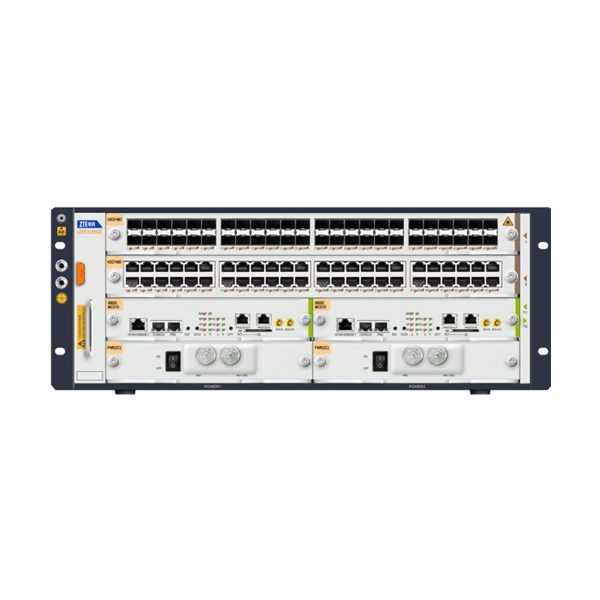
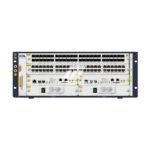
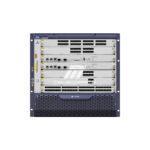
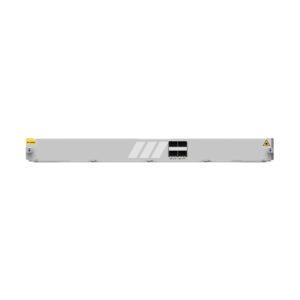
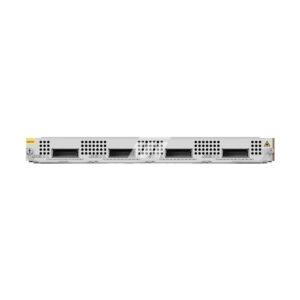
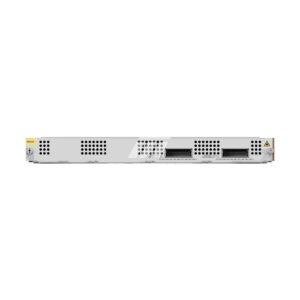
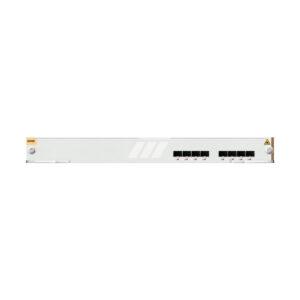
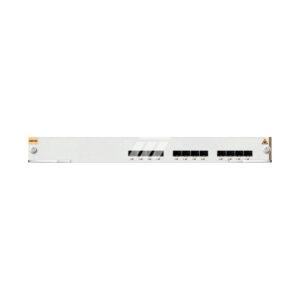
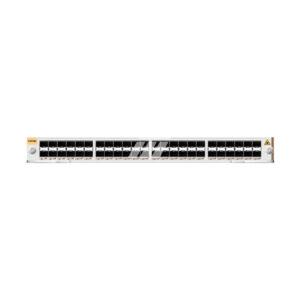
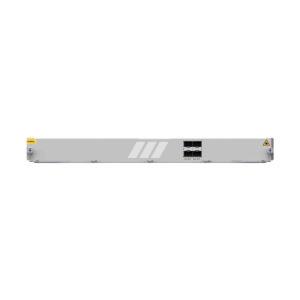
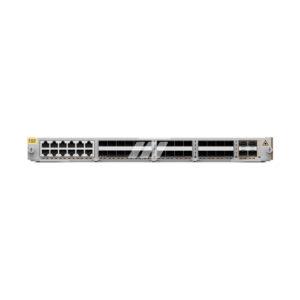
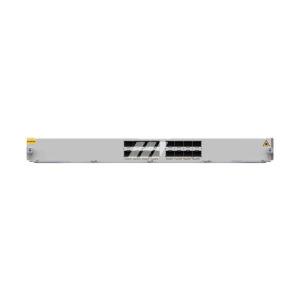
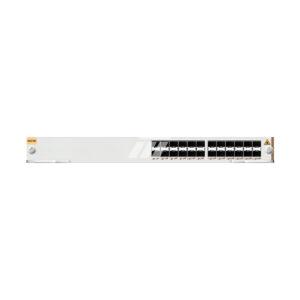
Reviews
There are no reviews yet.